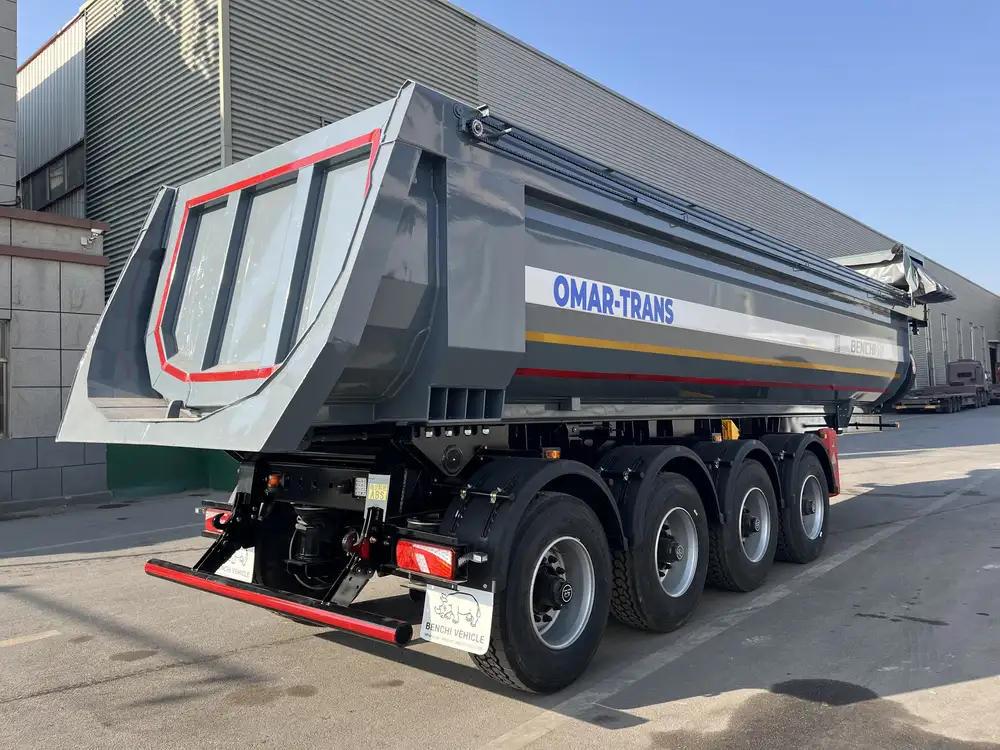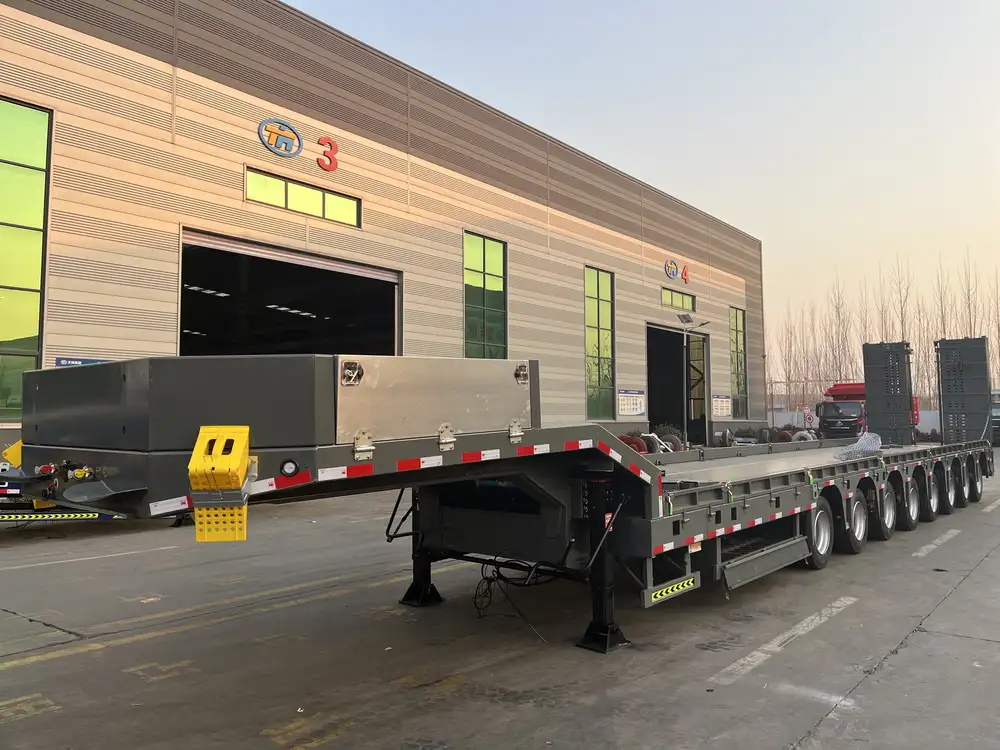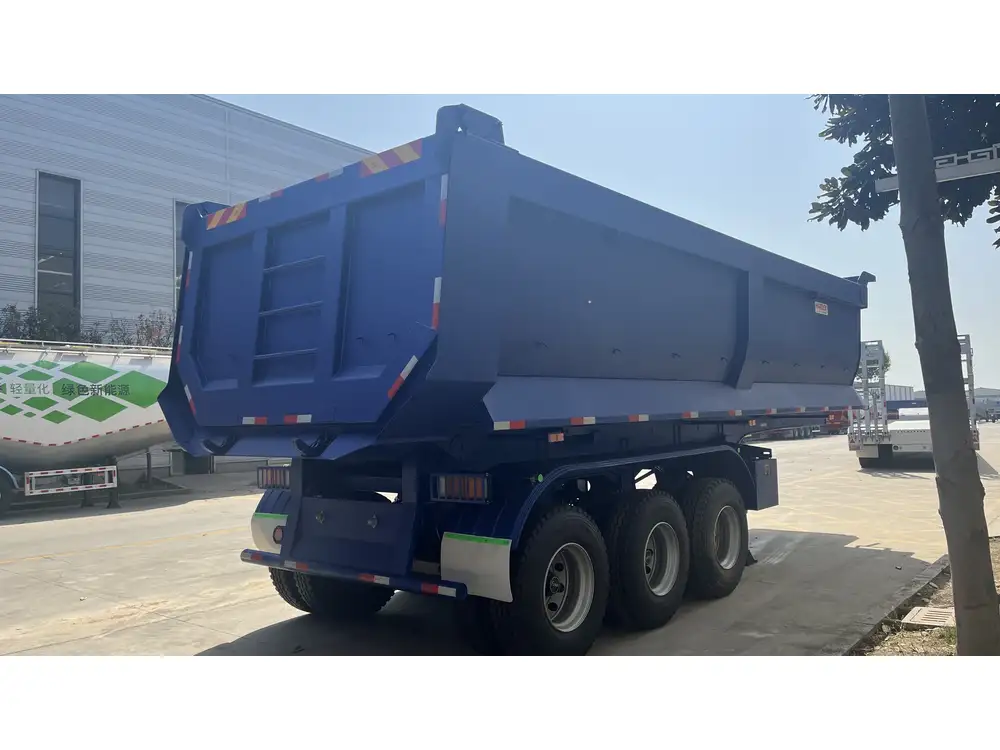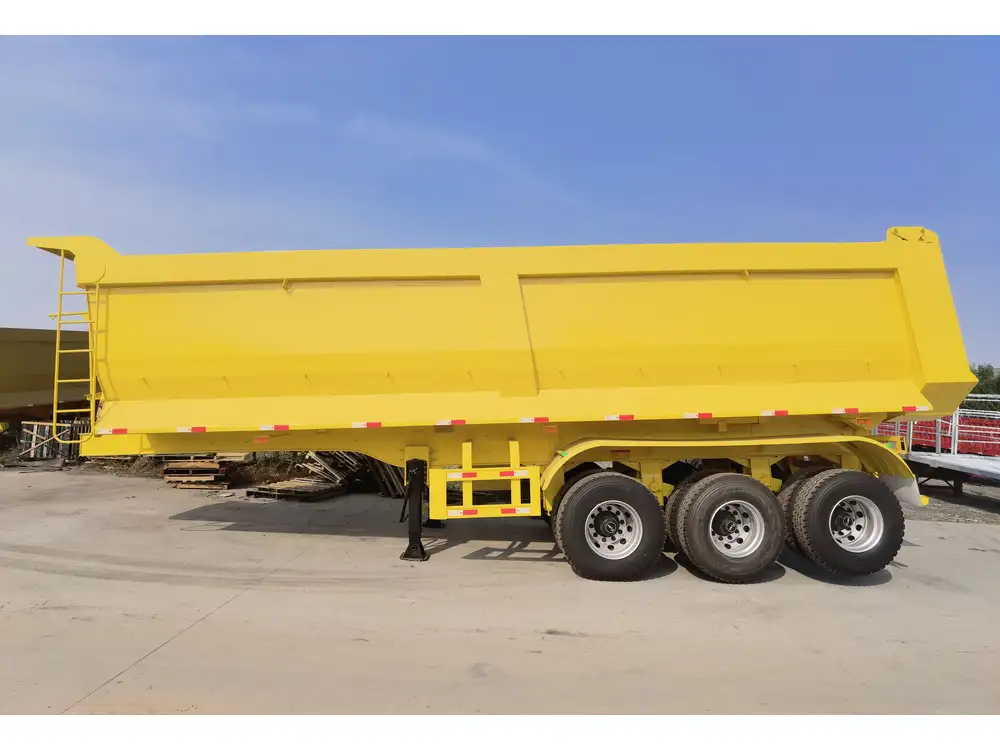Flatbed trailers play a crucial role in the transportation of various goods, from heavy machinery to building materials. As a manufacturer of semi-trailers, it’s essential to know how much an empty flatbed trailer weighs, as this knowledge significantly influences payload capacity, legal compliance, and overall operational efficiency.
What is a Flatbed Trailer?
Flatbed trailers are characterized by their open-deck design, allowing for easy loading and unloading of goods. Unlike enclosed trailers, flatbeds provide no sidewalls or roof, making them ideal for transporting large or oversized items. Their structural composition typically includes steel or aluminum frames, which can affect the weight of the trailer.
Common Types of Flatbed Trailers
Flatbed trailers come in various configurations, each designed for specific applications:
| Type | Description | Typical Weight Range |
|---|---|---|
| Standard Flatbed | Basic open deck with no sides or roof. | 4,000 to 5,500 lbs |
| Step Deck Flatbed | Lower deck for transporting taller loads. | 5,000 to 7,500 lbs |
| Double Drop Flatbed | Two drops in the deck for extra clearance. | 6,000 to 8,000 lbs |
| Conestoga Trailer | Enclosed with a retractable tarp for weather protection. | 5,500 to 7,500 lbs |

Benefits of Flatbed Trailers
- Versatility: Capable of accommodating a range of cargo sizes and types.
- Ease of Loading/Unloading: Open design allows for quick and straightforward access.
- Cost-Effectiveness: Generally lighter and more economical than their enclosed counterparts.
The Weight Implications of Flatbed Trailers
Why Knowing the Trailer Weight Matters
Understanding the weight of an empty flatbed trailer is pivotal for several reasons:
- Payload Capacity: The weight of the trailer affects the total weight limit set by transport regulations, determining how much cargo can be transported legally and safely.
- Fuel Efficiency: Heavier trailers may require more energy to tow, impacting operational costs.
- Compliance with Regulations: Different jurisdictions have specific limits on total vehicle weight; exceeding these can lead to fines and penalties.

Average Weight of Empty Flatbed Trailers
When assessing how much an empty flatbed trailer weighs, it’s important to consider different factors:
- Material Composition: Steel trailers are typically heavier than aluminum ones.
- Size and Configuration: The weight can vary based on whether the trailer is a standard flatbed or a step deck option.
The average weight range for different types of flatbed trailers generally falls between 4,000 and 8,000 pounds. Here’s a breakdown:
| Flatbed Trailer Type | Average Empty Weight (lbs) |
|---|---|
| Standard Flatbed | 4,000 – 5,500 |
| Step Deck Flatbed | 5,000 – 7,000 |
| Double Drop Flatbed | 6,000 – 8,000 |
Factors Influencing Weight
- Dimensions: The length, width, and height of the trailer can all contribute to variations in weight.
- Custom Features: Additional components such as toolboxes, winches, or specialized decking can increase weight.
- Accessories: The presence of tarps, straps, and tie-downs may also modify the overall weight.
Regulatory Standards and Compliance
Adhering to legal weight limits is essential for all transportation operations. In the United States, the Federal Motor Carrier Safety Administration (FMCSA) has established guidelines that dictate:
- Gross Vehicle Weight Rating (GVWR): The maximum weight a vehicle can safely carry, including trailer weight and cargo.
- Axle Weight Limits: Typically, the maximum weight per axle is 20,000 pounds.

Calculating Payload Capacity
To determine your flatbed trailer’s payload capacity, follow this formula:
Payload Capacity = GVWR – Trailer Weight
Assuming your flatbed has a GVWR of 30,000 pounds, and its empty weight is 5,500 pounds, the payload capacity would be:
[ 30,000 lbs – 5,500 lbs = 24,500 lbs ]Types of Regulations to Consider
| Regulation | Impact |
|---|---|
| State Profits and Impacts | Changes in regulations vary by state; always check local laws. |
| Weight Stations | Regular inspections ensure compliance; exceeding limits can result in fines. |
Maintenance and Weight Management

Maintaining Your Flatbed Trailer
Regular maintenance not only extends the life of your trailer but also ensures compliance with weight regulations. Here are some tips:
- Routine Inspections: Check for structural integrity and any signs of wear or damage.
- Tire Weight Management: Ensure tires are inflated properly to prevent weight-related issues.
- Weight Distribution: Properly distribute cargo to avoid excess stress on one side of the trailer, which can affect legal and safety standards.
Weight Saving Techniques
For manufacturers and fleet owners, reducing weight can lead to increased payload capacities. Here are some innovative strategies:
- Material Substitution: Consider using aluminum instead of steel where appropriate.
- Streamlined Designs: Adopt aerodynamic shapes to minimize drag and improve fuel efficiency.
- Feature Reduction: Analyze trailer features and remove unnecessary components without sacrificing functionality.
Common Questions Surrounding Flatbed Trailer Weights

How Can I Accurately Weigh My Flatbed Trailer?
To ensure accuracy when weighing your trailer:
- Use Certified Truck Scales: These are typically found at weigh stations or truck stops.
- Cross Weight Distribution: Make sure the weight is evenly distributed across all axles to achieve a precise reading.
What Are the Best Practices for Loading a Flatbed Trailer?
Proper loading techniques are essential for safe transport:
- Center the Load: Ensure that the load’s center of gravity is distributed evenly across the trailer.
- Secure the Cargo: Use straps, chains, or tarps to keep the cargo in place and avoid movement during transit.
- Observe Weight Limits: Always adhere to the calculated payload capacity based on your trailer’s specifications.
How Does the Weight of the Trailer Affect Towing Vehicles?
The weight of the trailer directly influences the type of vehicle required for towing. Here are considerations for towing:
| Factor | Consideration |
|---|---|
| Towing Capacity | Ensure your vehicle can handle the combined weight. |
| Braking Power | Heavier trailers require more robust braking systems. |
| Fuel Consumption | Increased weight leads to higher fuel usage. |

Conclusion: The Importance of Knowing Flatbed Trailer Weights
Understanding the weight of empty flatbed trailers is essential for safe transportation, compliance with legal standards, and overall efficiency in the logistics and transportation industry. From effective payload management to ensuring adherence to regulatory standards, knowledge in this area can profoundly impact operational success.
By staying informed about the specifications and the regulatory landscape surrounding flatbed trailers, manufacturers and operators alike can make educated decisions that not only enhance their performance but also contribute to safer roadways and improved economic outcomes. This diligence facilitates smoother operations and assures compliance within an ever-evolving transportation industry.
For further details on specific flatbed trailer models, options available, and weight considerations, reach out for insights tailored to your needs.
This article aims to provide a comprehensive look into flatbed trailers, specifically addressing the weight considerations crucial for their effective use in transport operations. With a focus on user intent, it endeavors to assist both manufacturers and users in navigating the complexities of flatbed trailers and enhancing their utility in daily operations.



